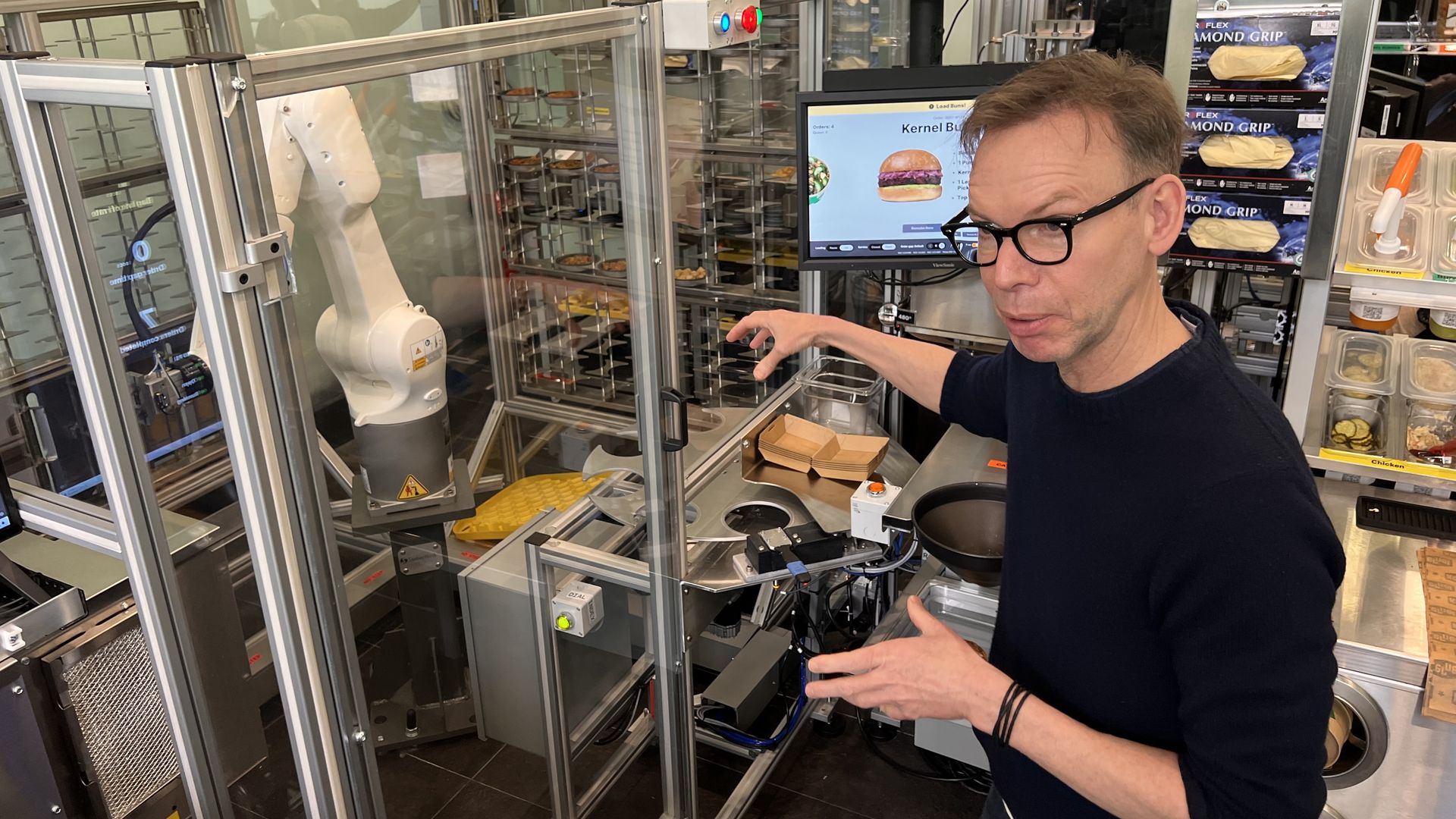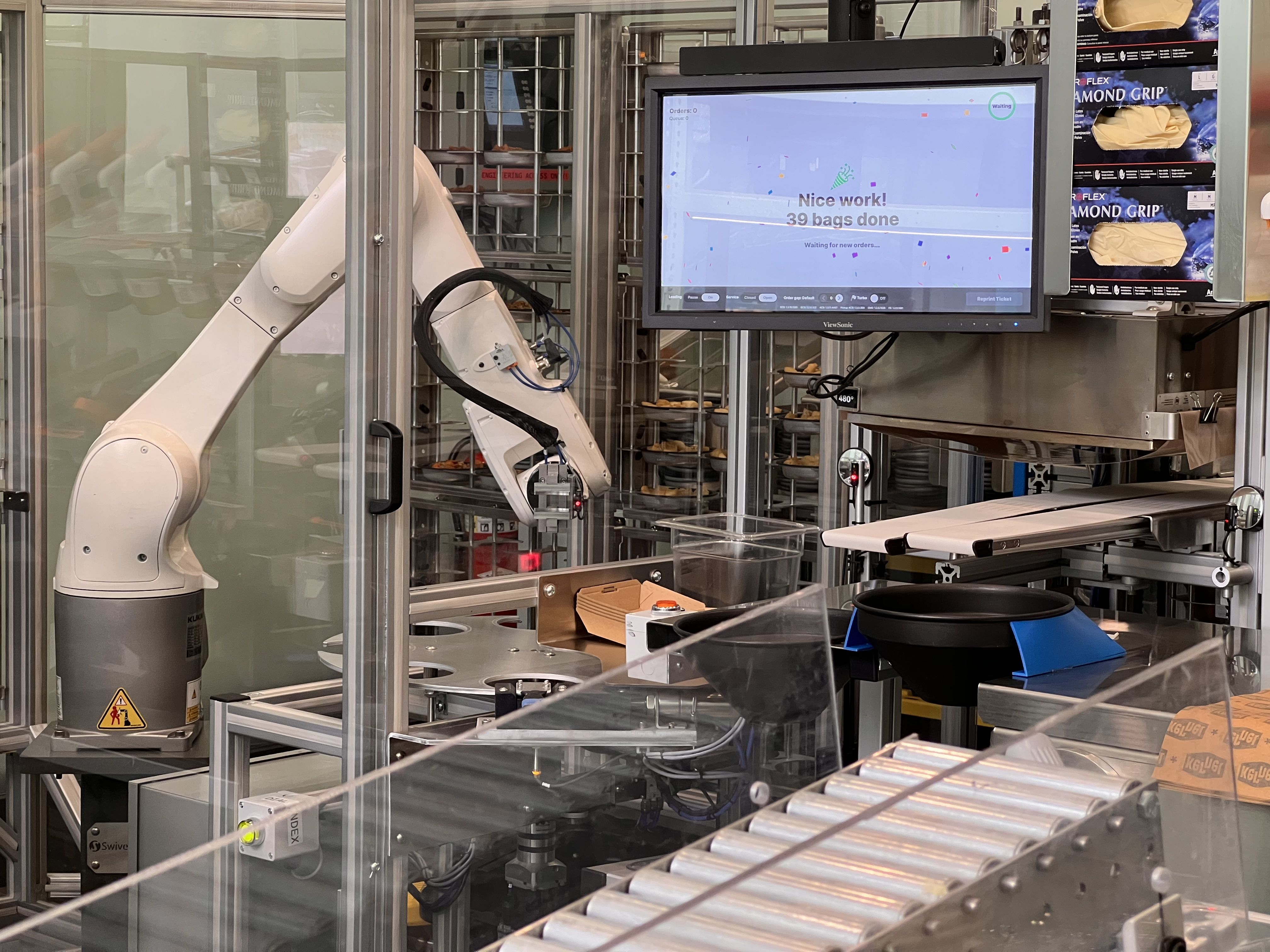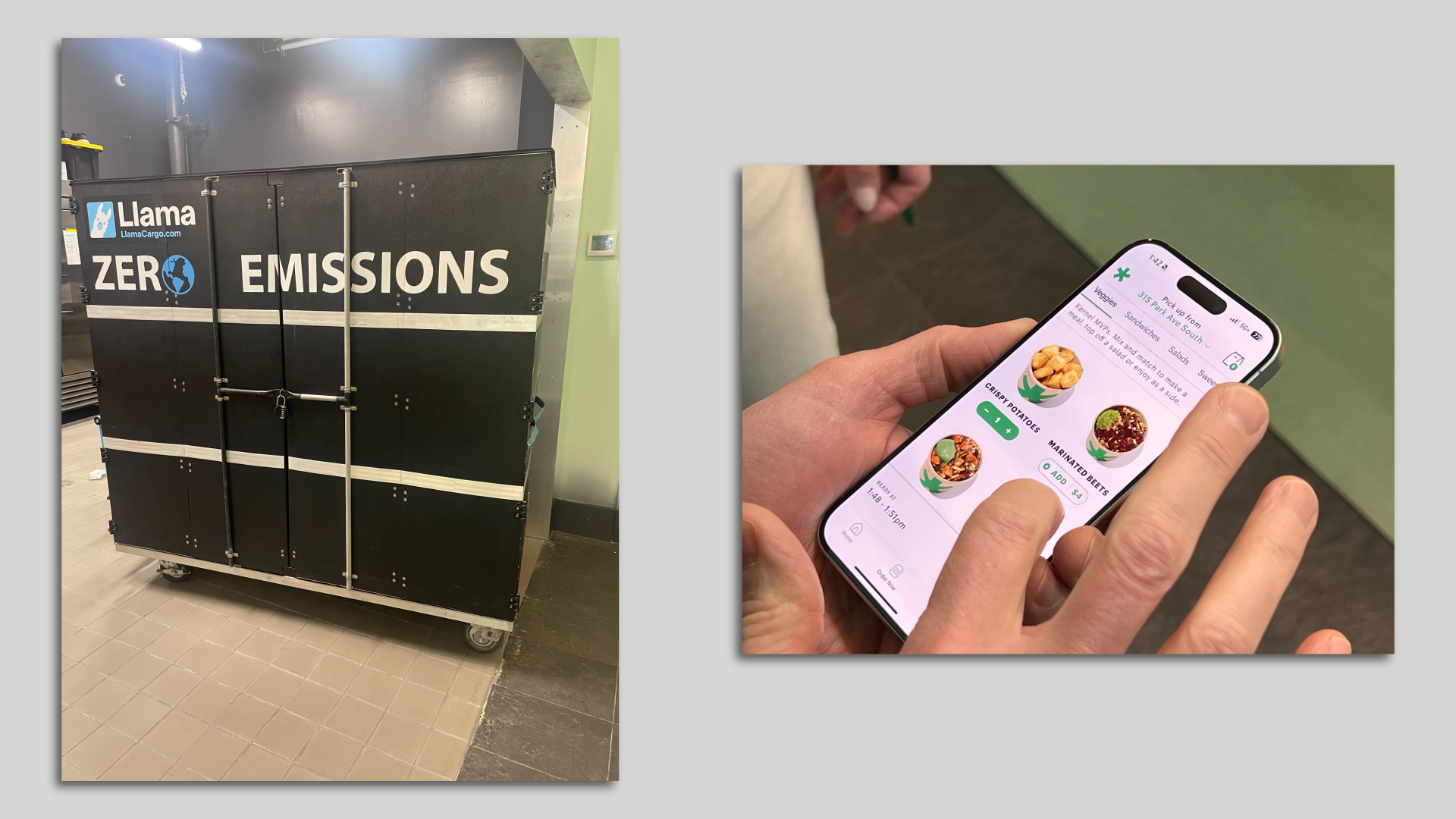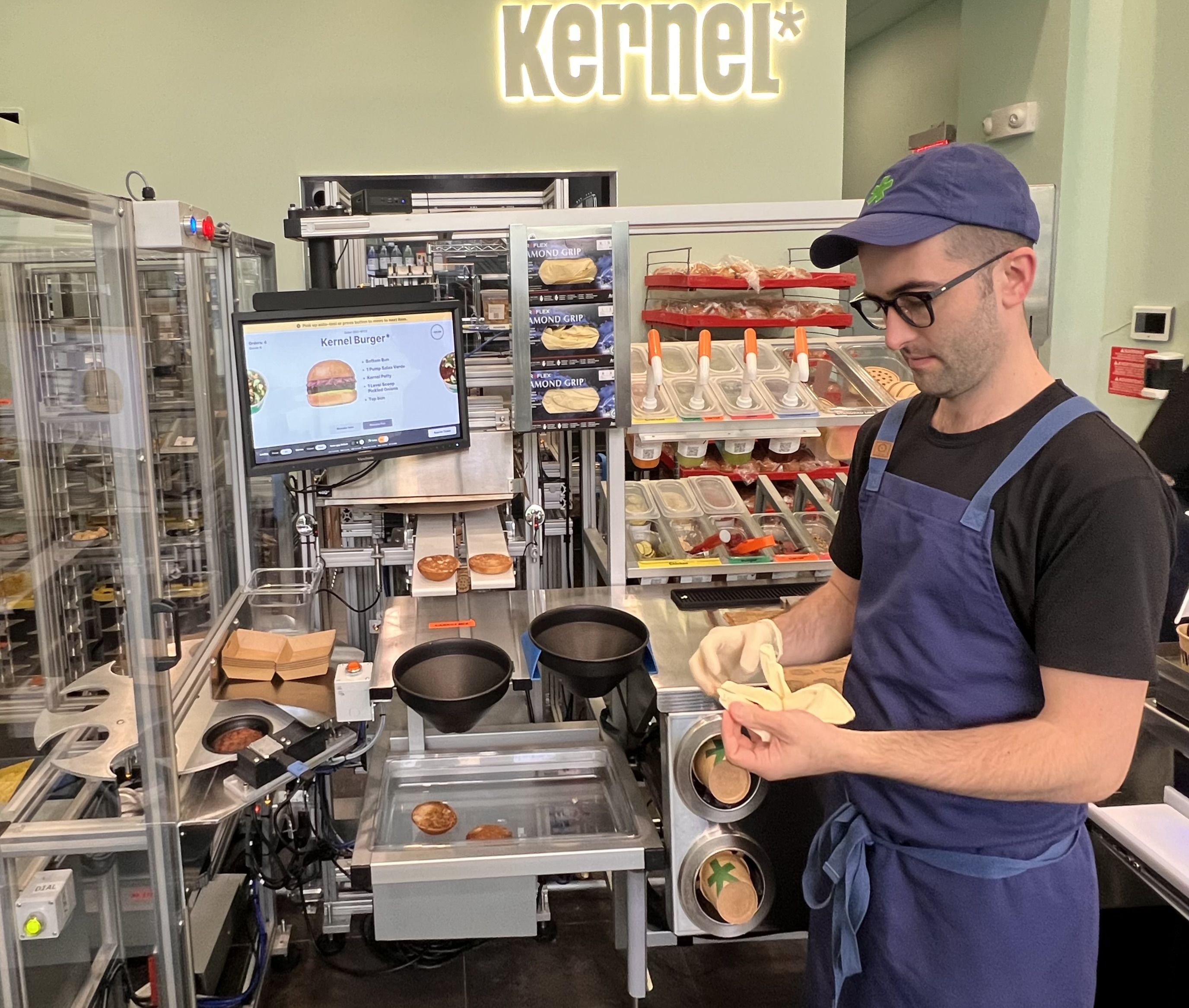Inside the Chipotle founder's new robot-powered vegan restaurant

- Jennifer A. Kingson, author ofAxios What's Next

Steve Ells, the founder of Chipotle Mexican Grill, in his first Kernel restaurant in New York City. Photo: Clifford A. Sobel for Axios
The founder of Chipotle is out with a new restaurant concept that he hopes will revolutionize the restaurant industry — again.
Why it matters: Kernel aims to redefine quick-serve restaurants for the AI and sustainability age.
- "I think this is yet another evolution of what a restaurant can be," Steve Ells, the Chipotle founder, told Axios during a tour of the first Kernel restaurant, which opened Feb. 12 in New York City.
How it works: There's no posted menu — you order online, are told the exact minute to pick up your food (ours took 6 minutes), and use an app to open a locker with your order inside.
- Ingredients are prepped off-site at a central kitchen and delivered hourly by e-bike. (The plan is for that to eventually happen with robots and autonomous vehicles.)
- Specific orders are then assembled on-site, partly by a robotic system.

Driving the news: Kernel is opening a series of stores around Manhattan this year — and simultaneously showing off its customized robotic technology to other restaurant chains that might want to license it.
- "I think there's an opportunity to build Kernel, the restaurant brand," Ells said. "People do love the food — especially the vegetable side dishes."
- "But this platform is very, very efficient. And I think the resulting economic model is one people will want to copy — and it's difficult."
Zoom in: Kernel's system includes both off-the-shelf and highly customized robotics.
- The centerpiece is a robotic arm with a specially built hand and grip from German manufacturer Kuka.
- As orders come in, the Kuka robot loads food into a custom-made induction oven with a serpentine conveyor belt that makes it small and efficient.
- The system is meant to minimize the amount of human labor that's required.
- "There's a lot of proprietary stuff in it, as you can see," Ells said. "We'll have the opportunity to license it in whole or in part to other restaurants."

Kernel has a main kitchen — staffed with humans — a half-mile from the initial store.
- "The hardest part of cooking is the prep, so we've centralized that," Andrew Black, Kernel's chief culinary officer, told Axios.
- Fresh ingredients arrive by trailer every hour, and the dirty dishes are scooted away.
- "We don't have to hold a lot of inventory" at the customer storefront, said Black, a former sous-chef at Eleven Madison Park, one of Manhattan's top restaurants.
Between the lines: Ells' vision involves hiring fewer workers, but paying them higher wages — and giving them more meaningful work.
- Each Kernel will (ideally) require only three workers: a "replenisher" who restocks ingredients, an "assembler" who pulls the foods together and a "bundler" who packs the bags.
- Over time, the robots will do even more of the food prep, freeing the humans for more systems monitoring and front-of-the-house work.
"It's really reinventing this 'McJob' that excites me so much," Ells said.
- "Because in the industry now, we're seeing 150% annualized turnover in these positions."
- With only three workers per restaurant, "you can afford to pay $27 an hour and a paid vacation," Ells said.

The big picture: The restaurant industry is going wild for robotics and automation — not just to save money on labor costs, but also because it's cool and adds consistency and efficiency.
- Sweetgreen acquired a robotic kitchen startup called Spyce in 2021 and has used it to open a chain called Infinite Kitchen.
- Robots are also reshaping the pizza industry, working as bartenders and fry cooks, and serving and delivering food.
Yes, but: There are still plenty of kinks to work out — as anyone who has seen blooper reels of delivery robots can attest.
- At Kernel, an errant potato fell out of a tray last week and forced the shutdown of the production line — oops!
- "We didn't know right away to turn off the customer order flow — it was a disaster," Ells recalled with a smile.
- A shield was subsequently set up to prevent such accidents — all part of the trial-and-error process, Ells said.
🍔 Dig in: The food was absolutely killer — particularly the plant-based Kernel burger, crunchy cucumbers with cashews and cilantro, and chocolate chip cookies topped with sea salt.
- But if you dine in, you have to eat standing up at a narrow counter.
Where it stands: Ells spends his days at the inaugural Kernel store, chatting with customers and helping them troubleshoot any problems — like opening the lockers via an app.
- "It's a new experience," he said. "That was true of Chipotle in the early days. There's a learning curve."
- Some customers who dropped by Kernel while Axios was visiting were impressed enough with the system to stop and take pictures.
- "This is the next big thing, I swear," one customer remarked while picking up his food.
What's next: As AI and robotics improve, Ells envisions taking even more of the labor out of the process of delivering food to the restaurants and prepping orders.
- "Eventually, the droid makes its way onto a self-driving vehicle," he said. "This platform is built for that technology we know is coming."
